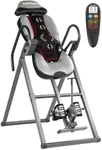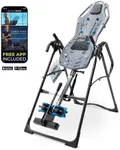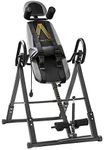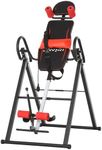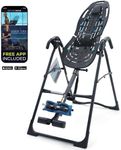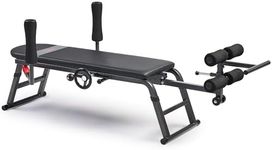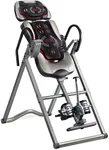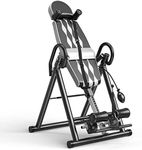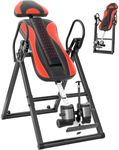Buying Guide for the Best Inversion Tables
Choosing the right inversion table can make a big difference in your comfort, safety, and the effectiveness of your back therapy. Inversion tables are designed to help relieve back pain, improve flexibility, and promote relaxation by allowing you to hang upside down or at an angle. When shopping for an inversion table, it's important to consider your body type, the space you have available, and how often you plan to use it. Understanding the key features will help you find a table that fits your needs and keeps you safe during use.Weight CapacityWeight capacity refers to the maximum user weight that the inversion table can safely support. This is important because using a table that can't handle your weight can be unsafe and may damage the equipment. Inversion tables typically have weight limits ranging from around 220 pounds to over 350 pounds. If you are on the lighter side, most tables will work for you, but if you are heavier, look for a model with a higher weight capacity. Always choose a table that supports at least 10-20% more than your actual weight for added safety.
Height RangeThe height range tells you the minimum and maximum user height the table can accommodate. This is important for proper balance and comfort during inversion. Most tables adjust to fit users from about 4'10" to 6'6". If you are particularly tall or short, make sure the table can be adjusted to your height. Setting the correct height ensures the table pivots smoothly and you can return upright easily.
Inversion Angle SettingsInversion angle settings determine how far back you can tilt on the table. Some tables offer fixed angles (like 20, 40, 60 degrees), while others allow for full inversion (completely upside down). Beginners may want to start with smaller angles, while experienced users might prefer the option to go fully inverted. If you are new to inversion therapy or have medical concerns, look for a table with easy-to-adjust, secure angle settings so you can gradually increase the angle as you get comfortable.
Ankle Locking SystemThe ankle locking system is what holds your feet in place while you are inverted. This is a crucial feature for both comfort and safety. Systems range from simple foam rollers to more advanced, cushioned clamps. If you have sensitive ankles or plan to use the table frequently, look for a system that is well-padded and easy to secure and release. Test the mechanism if possible to ensure it feels comfortable and secure for your body type.
Frame ConstructionFrame construction refers to the materials and build quality of the inversion table. Most tables are made from steel for strength and stability, but the thickness and design can vary. A sturdy frame is important for safety, especially if you plan to use the table regularly or at steeper angles. Heavier frames tend to be more stable but may be harder to move or store. If you need to move the table often, consider a model that balances sturdiness with portability.
Foldability and StorageFoldability and storage options are important if you have limited space at home. Some inversion tables fold flat for easy storage under a bed or in a closet, while others are bulkier and meant to stay in one place. If you need to put the table away after each use, look for a model that is easy to fold and not too heavy to move. If you have a dedicated space, you can prioritize stability over portability.
Padding and Comfort FeaturesPadding and comfort features include the cushioning on the backrest, headrest, and ankle supports. More padding generally means a more comfortable experience, especially during longer sessions. Some tables also offer ergonomic designs or additional lumbar support. If you have back sensitivity or plan to use the table often, look for models with extra padding and ergonomic features to enhance your comfort.
